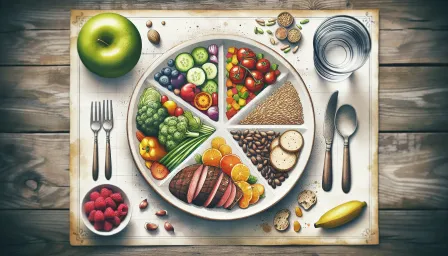Essential Tips for Cooking at Home for Families

Discover essential tips for cooking at home for families. Enhance your home cooking with expert advice and practical solutions.
Introduction
Cooking at home for families can be a rewarding and cost-effective way to provide nutritious meals and spend quality time together. However, it can also pose challenges, such as managing time, picky eaters, and staying organized. This article offers essential tips and expert advice to make home cooking for your family an enjoyable and successful endeavor.
Planning and Organization
Meal Planning
Effective meal planning is the cornerstone of cooking at home for families. It reduces stress, minimizes waste, and ensures a balanced diet. Consider these steps for successful meal planning:
- Plan Weekly Menus: Dedicate time each week to plan your meals. Incorporate a variety of dishes to keep it interesting.
- Create a Shopping List: Based on your meal plan, compile a shopping list to ensure you have all necessary ingredients.
- Batch Cook: Prepare large quantities of meals and store portions in the freezer for busy days.
Organize Your Kitchen
An organized kitchen makes cooking at home for families easier and more efficient. Here are some tips:
- Declutter: Clear countertops and organize utensils and ingredients for easy access.
- Use Labels: Label containers and shelves to quickly find what you need.
- Invest in Storage Solutions: Utilize drawer organizers, spice racks, and clear bins.
Cooking Techniques and Tips
Simple and Healthy Recipes
Focus on simple, healthy recipes that are easy to prepare and nutritious for the whole family. Some ideas include:
- One-Pot Meals: Dishes like stews, casseroles, and stir-fries save time and reduce cleanup.
- Sheet Pan Dinners: Roast vegetables, proteins, and grains together on a baking sheet for a balanced meal.
- Salads and Wraps: Quick and customizable, these are perfect for busy weeknights.
Time-Saving Techniques
Balancing family life and cooking can be challenging, but these time-saving techniques can help:
- Pre-Prep Ingredients: Chop vegetables, marinate proteins, and measure spices in advance.
- Use Slow Cookers and Instant Pots: These devices can cook meals with minimal supervision.
- Make Use of Leftovers: Repurpose leftovers into new meals, such as turning roast chicken into a hearty soup.
Involving the Family
Cooking with Kids
Involving children in cooking at home for families can be educational and fun. Here’s how to include them:
- Assign Age-Appropriate Tasks: Younger kids can wash vegetables, while older children can help with chopping and cooking.
- Teach Cooking Basics: Use cooking as an opportunity to teach basic skills and kitchen safety.
- Encourage Creativity: Let kids experiment with ingredients and recipes to foster creativity and interest in cooking.
Family Mealtime
Establishing regular family mealtimes can strengthen family bonds and promote healthy eating habits. Consider the following ideas:
- Set a Routine: Consistent mealtimes provide structure and something for the family to look forward to.
- Eliminate Distractions: Turn off screens and create a conducive environment for conversation.
- Involve Everyone: Encourage family members to share their day and contribute to meal planning.
Overcoming Common Challenges
Dealing with Picky Eaters
Picky eaters can be a major hurdle in cooking at home for families. Try these strategies:
- Introduce New Foods Gradually: Slowly integrate new foods with familiar favorites.
- Make Meals Fun: Use creative presentations and involve kids in meal preparation.
- Be Patient: It can take multiple exposures to new foods before children accept them.
Managing Dietary Restrictions
Dietary restrictions require careful planning but are manageable with these tips:
- Communicate Clearly: Ensure that you are aware of all dietary needs and preferences.
- Find Suitable Substitutes: Research and use alternative ingredients that meet dietary requirements.
- Cook Separate Portions: When possible, prepare parts of the meal separately to cater to different needs.
Conclusion
Cooking at home for families is a rewarding practice that promotes healthier eating habits, fosters family bonds, and offers significant cost savings. With effective planning, the right cooking techniques, and active family involvement, you can overcome common challenges and make home cooking an enjoyable experience. Start implementing these tips today and watch your family thrive at the dinner table.



























